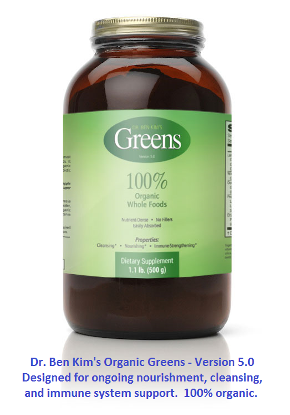You are here
Traditional Methods of Preparing Staple Foods
In mentioning traditionally fermented sourdough bread in a previous post, I received a number of thoughtful messages on this topic, including the following from my friend Myra in Oaxaca, Mexico:
***
Hi, Ben!
Thank you for your post about sourdough bread (and all your other great posts, also!). It's good to hear about how an ancient process can transform whole grain into a more generally useful foodstuff.
Unfortunately where I live there is no way to make sourdough or any other kind of whole grain bread. The only flour available is refined white. And there are no flour mills available to the public, so even on those rare occasions when I have been able to purchase some decent-looking whole grain wheat, I can't turn it into flour. This is a culturally-induced problem, because certainly lots of wheat is grown in Mexico. Aside from whole grain corn, the nearest thing I can get to a whole grain is rolled oats. All rice is white, and none of the other gluten-free grains are available.
But the corn is worth mentioning. In ancient times the indigenous peoples somehow discovered the method to turn corn into a nutritious staple food. It's a simple process and still used throughout Mexico: the dry, whole corn kernels are boiled for 20 minutes or so in water to which has been added a dose of powdered calcium hydroxide (in an amount corresponding to the quantity of corn being prepared -- I don't know the proportion exactly). This treatment not only softens the kernels, but changes something about their chemistry. Once treated in this manner, the corn is called NIXTAMAL and is now ready to be ground, still wet, in any of the local home-based mills, to become MASA (dough) DE NIXTAMAL. This is the dough women use every day to pat out their tortillas -- a process perfected only after long experience, I can assure you! I've never had time or energy to learn, so I get my fresh hot tortillas from a neighbor lady who makes dozens every day, often twice a day, for her numerous family.
Now if all that isn't magical enough, according to what I've read, the changing of raw dry corn kernels into nixtamal is the reason Mexican peoples don't get pellagra, even though millions have lived and today still live in nutritionally-precarious conditions. Whereas, in the United States, poor whites and blacks, not knowing the ancient indigenous art of making nixtamal, suffered widely from pellagra until chemistry stepped in with the addition of Vitamin B3 to cornmeal.
It seems to me that "Western culture" still tends to suffer from a somewhat unrecognized and distorted perception of the overall history of the human race. We tend to assume that whatever humans learned throughout thousands and thousands of years of "prehistory" has been more or less superseded by Modern Science, which is supposed to be far more rational and valid than whatever all those "pre-scientific" humans were doing. Although for some time now, in the interests of finding new wonder-drugs, even the scientific/financial establishment has been seeking the secrets of ancient remedies made from ingredients available in nature.
Anyway, sourdough is one of those ancient processes, successfully transforming wheat and other glutenous grains (crops that the earliest agricultural civilizations could not only grow, but also STORE for use during the leaner months of the year) into healthful and nutritious foodstuffs.
That said, we people who have been and continue to avidly learn and conscientiously practice healthy lifestyles may come to the conclusion that it's best to limit our consumption of grain products, not only due to their possible ill effect on some people, but to make more room in our diets for other foods that we consider more nutritious and/or easily-assimilated.
But this segment of the population is only a very small fraction of today's billions of people worldwide, millions of whom live in abject poverty, overworked, overexposed to climactic extremities, undernourished in the most basic and unremitting sense, often in countries whose land, climate, and/or social conditions are inimical to a diverse, life-supporting agriculture. In such areas, human life may perforce rely to a great extent on the continuous availability of a few staple crops -- and these are most likely to be grains. Hence the very primal value --necessity -- to process those grains into the most healthful, nutritious form possible. Hence nixtamal, hence sourdough...are there others? I don't know.
Ethiopians use their grain TEFF to make INJERA, a flat, moist, spongy-textured bread, which is used (quite like a corn tortilla) as an edible spoon to scoop other foods from plate to mouth. Maybe injera would be classified as a sourdough bread.
Thank you for the opportunity to participate in the large and diverse "interest community" you have created through your work and website!
Best wishes always,
Myra Bailes
***
Many thanks to Myra for sharing from her wealth of knowledge and life experiences.
In the same vein of Myra's thoughts, soy, though not a grain, has long been fermented in east Asian cultures to be used as a nutritious and easily-digested staple food in the forms of miso and tempeh.
Fermentation to make foods more suitable for supporting health is a fascinating topic that Michael Pollan, author of Cooked thoughtfully and beautifully presents in his book and also in his Netflix documentary series.
If you're in search of comprehensive guidance on baking healthy bread, the following book is considered by many to be the gold standard on this topic:
Flour Water Salt Yeast: The Fundamentals of Artisan Bread and Pizza
Many thanks to Leigh Caldwell for sharing this resource with us!
Join more than 80,000 readers worldwide who receive Dr. Ben Kim's free newsletter
Receive simple suggestions to measurably improve your health and mobility, plus alerts on specials and giveaways at our catalogue
Please Rate This
Highest Rated | Related Posts | ||











Comments
MASA (dough) DE NIXTAMAL
What a wonderful article. Completely new to me. So I did some research online and found MANY articles detailing how to do this. I can't wait to try it. Thank you for sharing (both of you)
Thank you for sharing this
Thank you for sharing this letter. However, the biggest concern today is the genetic modification of the grains, and corn and wheat have been modified in larger way, compared to rye, i believe.
Re the book you are referring, can you please clarify what kind of "yeast" the book would be talking about - wild yeast starter or commercial yeast (which is stable to high temperature)?
Great article!
Very interesting post! In the book "Nourishing Traditions" it tells about how we must properly prepare foods like our anscestors did for optimal health. I read about how corn must be soaked in lime water(calcium hydroxide)to avoid pellegra. The corn bread recipe says to soak 2 cups of freshly ground corn meal in 1 1/2 cups lime water for 7 hours. When I eat oatmeal I soak the oats in something acidic like yogurt or buttermilk overnight before quickly cooking it in the morning as my northern European anscestors did. I'm glad you added the part about soy also, since so many Americans have started consuming soy thinking it is so healthy, but traditionally it was fermented first to remove the enzyme inhibitors and phytates that can cause health problems. We can learn much from those who came before us.
I agree. You should also
I agree. You should also check out traditional cooking school for more on this subject. Warden Harmon is the lead teacher of this online cooking school she has lots of great info.
Calcium Hydroxide? Who'd a Thunk?
When reading things like this I always wonder how the first person figured out they should add something like Calcium Hydroxide in the corn soaking water? Accident? Message from God?